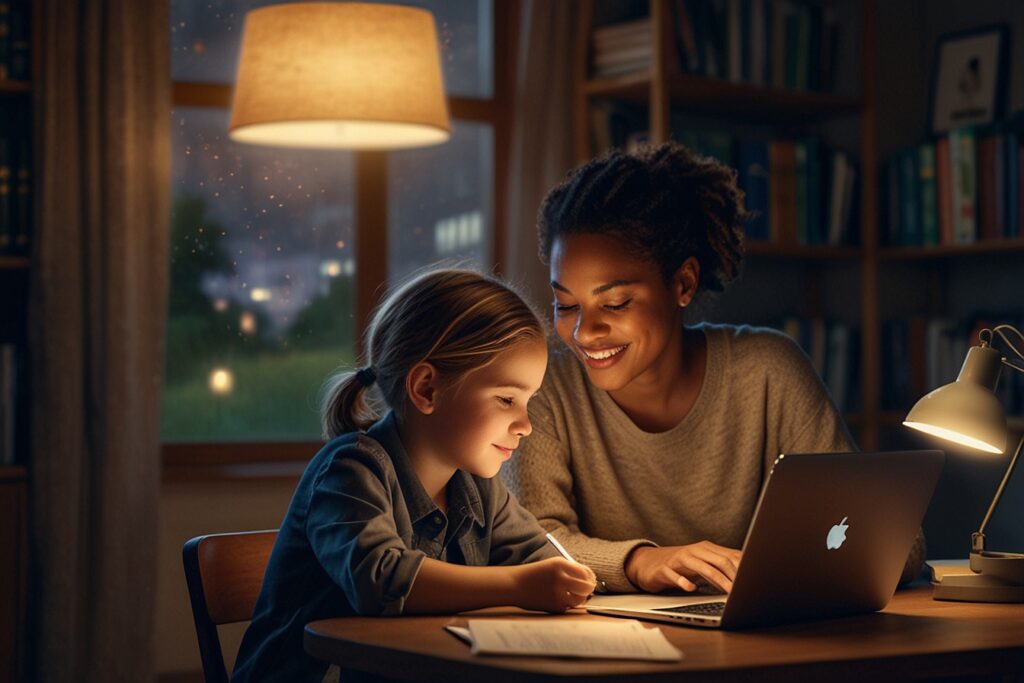Introduction: From Hype to Habit
Let’s be real: when ChatGPT first started trending a few years ago, it was seen as a novelty. People used it to write poems, generate tweets, or mess around with roleplay prompts. It was fun—but fleeting.
Fast forward to 2025, and ChatGPT is no longer just “cool tech.” It’s practical. It’s powerful. And for millions of people around the world, it has become part of their everyday routines—quietly improving workflows, helping students catch up, and saving businesses both time and money.
This article isn’t about theory. These are real, grounded ways ChatGPT is being used right now—in classrooms, boardrooms, and beyond.
Let’s explore how this digital assistant is reshaping the real world, one conversation at a time.
1. Automating Routine Business Communication
“Can you just write this email for me?”
That’s probably one of the most common things professionals say to ChatGPT every morning. Whether it’s a follow-up email, a client reminder, or a press release draft—ChatGPT can take a rough idea and turn it into polished writing.
And here’s the thing: it doesn’t just churn out words. It adapts to tone, purpose, and audience. Want it casual but still professional? Done. Need it to sound like legal jargon? Easy.
Real example?
A small logistics company in Karachi uses ChatGPT to draft internal policy updates. Instead of HR spending hours refining the language, they now plug in bullet points and get a ready-to-send memo in minutes.
It’s not just automation—it’s liberation from mental fatigue.

2. Real-Time Brainstorming Partner for Marketers
Marketing teams live in the realm of ideas—but let’s be honest, the creative well sometimes runs dry.
That’s when ChatGPT steps in like a patient teammate who never runs out of caffeine. It helps:
- Brainstorm ad copy variations
- Rewrite headlines in different tones
- Generate product taglines
- Structure campaign briefs
And the magic? It doesn’t judge. You can say, “That’s terrible, give me five more,” and it’ll just smile (figuratively) and keep going.
Many creative directors now use it as their first round brainstormer before bringing rough drafts to their teams. It’s faster, cheaper, and surprisingly effective.
3. Personalized Tutoring for Students—At Scale
Back in the day, students struggled in silence. If you didn’t understand a math concept, you either stayed confused or waited till the next class (and hoped the teacher wasn’t in a rush).
Today? Students type into ChatGPT:
> “Can you explain integration like I’m 15?”
And they get an answer that feels like it was written just for them.
This isn’t about replacing teachers—it’s about giving every student a customized, no-pressure assistant they can access 24/7. It’s patient, adaptable, and never shames them for “dumb” questions (because let’s be honest—most of us were too shy to ask those in class).
Schools around the world, especially in underserved regions, are starting to integrate ChatGPT as a supplementary resource. And the results? Increased confidence, improved grades, and more independent learners.
4. Turning Meeting Notes Into Action Plans
You just finished a 60-minute Zoom call. Your brain is mush. There are 12 tasks floating around, and someone said something important—but you forgot who.
Now imagine you drop the transcript into ChatGPT and ask:
> “Can you summarize this meeting and list next steps?”
Within seconds, you get:
- A bulleted summary
- Action items assigned to team members
- A suggested follow-up email draft
That’s what’s happening in hundreds of companies—especially remote ones—right now.
It’s not just time-saving. It’s about mental clarity. People walk out of meetings knowing exactly what needs to happen next.
5. Supporting Teachers with Content Creation
Let’s give teachers some love—they juggle lesson planning, grading, admin work, and still try to keep a smile on their face.
ChatGPT is becoming their secret weapon. Here’s how it helps:
- Generate quiz questions based on specific topics
- Rewrite reading passages for different age levels
- Suggest discussion questions for a classroom debate
- Create templates for rubrics, worksheets, or reports
A high school teacher in Lahore shared that she uses ChatGPT every Sunday night to generate lesson materials in under 30 minutes. “It doesn’t take away my creativity,” she said. “It just gives me a head start.”


6. Customer Service: Instant, Consistent, and Kind
Customer service is often where businesses lose people. A slow response, a cold reply, or a poorly written FAQ can turn interest into frustration.
Now, many companies are embedding ChatGPT into their customer support systems—not just as a chatbot, but as a dynamic writer behind human agents.
Support staff use it to:
- Rewrite difficult replies more politely
- Translate messages
- Summarize long complaints and suggest solutions
It’s like giving every support rep their own editor and language assistant. The result? Faster responses, fewer escalations, and happier customers.
7. Career Development for Job Seekers and Professionals
From writing your first CV to negotiating your promotion, ChatGPT is quietly coaching people across industries.
You can ask it:
- “Can you tailor my resume for a marketing assistant role in Dubai?”
- “What questions should I expect in a behavioral interview?”
- “Can you improve this LinkedIn summary?”
And the output? Surprisingly sharp, often with insights on tone, structure, and what recruiters want in 2025.
It’s like having a free, always-on career coach in your pocket.
8. Language Learning That Feels Natural
Language learning apps can be robotic. You repeat phrases, tap buttons, memorize lists.
ChatGPT changes the game by allowing learners to have real conversations.
A Spanish learner might say:
> “Can we have a short conversation about ordering food at a restaurant?”
ChatGPT replies like a friendly tutor, sometimes even correcting errors gently as it goes:
> “Perfect! Just one small tip—use ‘quiero’ instead of ‘quiere’ when talking about yourself.”
It’s practical, responsive, and much more enjoyable than flashcards.
9. Research Assistant for University Students
University students don’t just need help writing essays—they need help organizing research, forming arguments, and staying focused.
ChatGPT helps by:
- Summarizing dense academic texts
- Suggesting thesis statements
- Generating outlines based on a research topic
- Flagging logical gaps in arguments
It doesn’t write the paper for them—but it guides the thinking process. And in a world full of information overload, that’s a huge win.

10. Breaking Through Mental Blocks
This one’s more subtle—but just as real.
Whether you’re writing an important email, stuck on an idea, or just staring at a blank page—ChatGPT helps you get un-stuck.
It gives you that first draft, that push forward, that moment of “Oh, I can do this.”
It’s not just about saving time. It’s about saving mental energy. And that, honestly, is priceless.
11. Helping Non-Native English Speakers Build Confidence
Let’s pause for a moment and think about how intimidating it can be to work or study in a language that isn’t your first.
You hesitate to write emails. You reread sentences five times. You wonder if your grammar will make someone judge you. It’s exhausting.
Now imagine having a tool that not only corrects your mistakes but does it gently—without red ink, without sarcasm, without sighing.
That’s what ChatGPT does for millions of non-native English speakers. Whether they’re writing cover letters, college assignments, or just trying to word a simple message professionally—it helps, quietly and kindly.
A marketing intern from Morocco put it perfectly:
> “It gave me the confidence to speak up in meetings… because now, I rehearse my points with it first.”
That’s not just grammar assistance. That’s empowerment.
12. Assisting Special Needs Learners
One of the most quietly transformative uses of ChatGPT is happening in classrooms that often get overlooked—those with special education needs.
Teachers and parents are now using ChatGPT to:
- Simplify complex instructions
- Create visual-friendly learning plans
- Build alternative learning paths based on how each child processes information
For a student with ADHD, the ability to ask the same question five different ways—and get five calm, clear answers—is a game changer.
For a parent homeschooling a child with dyslexia, having an AI that can rephrase a science lesson in gentle, simple language is the support they never knew they needed.
AI, when used compassionately, becomes inclusion in action.
13. Daily Planning and Focus for Busy Professionals
We all have days where our brains are spaghetti.
Too many tabs open. Too many tasks. No idea where to start. That’s where ChatGPT has quietly become a mental anchor for busy professionals.
People now use it to:
- Organize chaotic to-do lists into a calm, clear schedule
- Break big tasks into smaller, manageable pieces
- Set reminders and reflections that actually feel encouraging

You might ask:
> “Can you help me structure my day so I can finish this report, prep for my client call, and still breathe?”
And it’ll give you a plan. Not some robotic bullet list—but something with pacing, rest, even motivational nudges.
Some even say it feels like having a project manager meets life coach in their pocket.
14. Real-Time Translation & Cultural Guidance
Global teams are more common than ever—and ChatGPT is helping people connect across borders with less stress and more understanding.
It’s not just translating language—it’s translating tone and context.
Example:
A team in Tokyo wants to write a thank-you email to a partner in Berlin. They’re not sure how formal to be. They ask ChatGPT:
> “Can you help write this so it sounds warm but professional in a European business tone?”
Boom. It delivers.
It’s those little bridges—between languages, cultures, unspoken norms—that make global collaboration smoother. And people are noticing.
15. Reigniting Lifelong Learning
There’s something beautiful happening behind the scenes in households all over the world.
Adults—many who thought they were “too old” to go back to school—are quietly turning to ChatGPT to learn.
A 48-year-old dad in Faisalabad is finally understanding algebra because ChatGPT explains it like a friend.
A 36-year-old nurse in Turkey is studying for an online coding bootcamp, using it to practice logic problems after long shifts.
A retiree in Canada is exploring philosophy, asking it questions like:
> “Explain Nietzsche’s ideas in a way I can relate to as a grandmother.”
This isn’t just education—it’s healing old self-doubt. It’s reclaiming the joy of learning without shame.

16. Internal Training & Onboarding in Companies
In 2025, training manuals are becoming… well, extinct.
Companies now use ChatGPT to:
- Create onboarding guides
- Simulate training scenarios
- Answer new employee questions on policies, tools, and more
And it works because it adapts to how each person learns.
Some need step-by-step instructions.
Some want video scripts.
Some just want quick definitions without all the fluff.
It doesn’t replace HR—but it makes training less dry, less overwhelming, and far more interactive.
17. Emotional Check-ins & Mental Wellness
Now here’s a use case nobody expected—but everybody’s grateful for.
People are talking to ChatGPT not just about work or school—but about life.
They’re journaling in it.
They’re venting stress.
They’re reflecting out loud, and ChatGPT responds with prompts, encouragement, and kindness.
It’s not a therapist—but it’s something softer than silence.
Sometimes it just says:
> “That sounds like a lot to carry. Want to break it down together?”
And that’s enough. In a world that often rushes past our feelings, ChatGPT pauses with us.
18. Creative Learning for Kids
Parents are discovering that ChatGPT isn’t just for grown-up tasks—it can be a playful, safe learning companion for kids too.
They use it to:
- Tell bedtime stories that include their child’s name
- Explain “big” topics like climate change or money in age-appropriate ways
- Turn math practice into little games
The tone it takes with kids is gentle, cheerful, and educational without being boring. It’s like having a digital librarian who’s always available.
And because parents can supervise the conversation, they feel more secure than handing over random YouTube videos.
19. Collaborative Writing in Classrooms and Workspaces
Remember those awkward group projects where one person did all the writing, another barely showed up, and no one knew how to get started?
Now, ChatGPT acts like the neutral scribe that helps everyone get on the same page.
Students can brainstorm together, plug their notes into ChatGPT, and ask:
> “Can you help us write a first draft from this outline?”
And it delivers something they can tweak as a team—without arguments or ego.
In office settings, it works the same way for reports, slide decks, or even internal newsletters. It helps bridge gaps in skill levels, so everyone contributes with confidence.

20. Saving Time Without Sacrificing Thought
This one’s hard to quantify, but it’s probably the most powerful.
ChatGPT doesn’t just write faster or summarize better—it helps people think more clearly.
You start with a vague idea:
> “I think I want to pitch this idea to my manager, but I’m not sure how to explain it…”
ChatGPT talks you through it.
You clarify. You iterate. You go from uncertain to confident.
And maybe for the first time in a long time, you realize:
> “I do know what I’m doing. I just needed a little help shaping the words.”
That’s what technology should do—not replace us, but reveal our best thinking.
Conclusion: Quietly Transformative
ChatGPT hasn’t just entered the workplace or the classroom—it’s entered our daily lives.
It’s helping us:
- Speak more clearly
- Learn more fearlessly
- Work more meaningfully
- And think more deeply
Not in loud, dramatic ways—but in quiet, consistent moments of support. And that’s what makes its real-world use so revolutionary:
It’s not here to be noticed—it’s here to make us feel more capable, more informed, and a little more understood.

